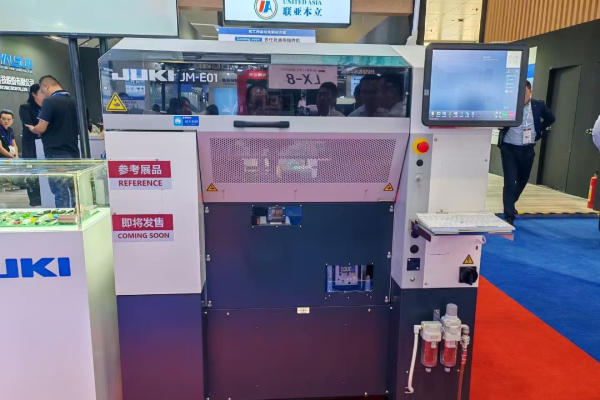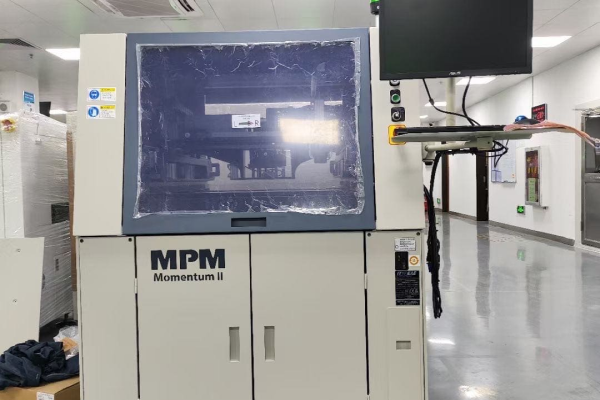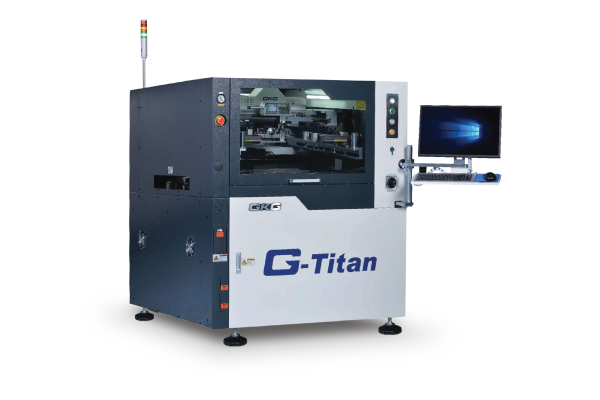
In my experience as an expert in electronics manufacturing, selecting the right SMT machines1 for printed circuit board printing is crucial for achieving optimal production efficiency and product quality. With a variety of options available, including reputable brands like MPM, Dek, and GKG, understanding how to choose the right machine can significantly impact your operations. In this guide, I will share insights on the key factors to consider when selecting SMT machines, ensuring that you make informed decisions tailored to your specific manufacturing needs.
Choosing the right SMT machine involves evaluating several critical factors such as speed, accuracy, cost, and compatibility with your production requirements. Each brand has its strengths and weaknesses, making it essential to align your specific needs with the capabilities of the equipment. By understanding these dynamics, I believe manufacturers can enhance their production lines and achieve optimal performance.
To effectively choose an SMT machines for PCB printing, it is important to consider not only the technical specifications but also your production goals and budget constraints. This guide will explore these factors in detail, providing insights that will help you navigate the complexities of SMT machinery selection.
- SMT machines enhance production efficiency.
- True. SMT machines automate the assembly process, significantly reducing labor costs and increasing speed and accuracy in PCB manufacturing.
- MPM, Dek, and GKG are leading manufacturers of SMT machines.
- True. These brands are well-respected in the industry for their advanced technology and reliability in PCB assembly.
- All SMT machines are suitable for any type of PCB.
- False. Different SMT machines have varying capabilities that may make them more or less suitable for specific types of PCBs or component sizes.
Table of Contents
- What Are SMT Machines?
- Why Is Choosing the Right SMT Machine Important?
- What Factors Should You Consider When Choosing an SMT Machine?
- How Do MPM, Dek, and GKG Printers Compare?
- What Are the Common Types of SMT Machines?
- How Can You Optimize Your SMT Machine Selection Process?
1. What Are SMT Machines?
In my view, SMT machines are specialized equipment used in the assembly of electronic components onto PCBs. These machines facilitate the precise placement of surface-mounted devices onto circuit boards using automated processes that enhance speed and accuracy compared to manual methods.
SMT machines come in various forms, including solder paste printers, pick-and-place machines, reflow ovens, and inspection equipment. Each type plays a critical role in ensuring that PCBs are assembled correctly and efficiently. For instance, solder paste printers apply solder paste to designated areas on a PCB before components are placed, while pick-and-place machines accurately position SMDs on those pads.
Understanding how each type of SMT machines functions is essential for manufacturers aiming to optimize their production lines. By leveraging these technologies effectively, I’ve seen businesses achieve higher output rates while maintaining stringent quality standards.
In my experience, SMT machines are essential tools in modern electronics manufacturing that automate the assembly process for printed circuit boards (PCBs). They enhance efficiency by ensuring accurate placement of components and reducing labor costs associated with manual assembly methods.

1.1 The Role of Solder Paste Printers
From what I’ve observed in my career, solder paste printers are critical in the PCB assembly process as they apply solder paste to specific areas on the board where components will be placed. The precision of solder paste application directly affects the quality of solder joints once components are reflowed. High-quality printers ensure minimal waste and accurate deposition, which is vital for high-density boards where space is limited.
1.2 Pick-and-Place Machines: The Heart of SMT
In my opinion, pick-and-place machines are often considered the heart of the SMT process due to their role in placing components onto PCBs accurately and efficiently. These machines utilize advanced vision systems to identify component orientation and position them with high precision. The speed at which they operate can significantly influence overall production throughput, making them a critical investment for manufacturers looking to scale operations.
1.3 Reflow Ovens: Finalizing Assembly
Once components are placed on PCBs, reflow ovens play a crucial role in finalizing the assembly process by melting solder paste to create permanent connections between components and pads on the board. The temperature profiles used during this process must be carefully controlled to avoid defects such as tombstoning or insufficient solder joints. Understanding how different reflow ovens operate can help manufacturers choose equipment that aligns with their specific assembly requirements.
- Solder paste printers ensure accurate application of solder.
- True. High-quality solder paste printers apply paste precisely where needed, which is crucial for effective solder joints.
- Pick-and-place machines do not require calibration.
- False. Regular calibration is necessary for pick-and-place machines to maintain accuracy over time.
- Reflow ovens determine the quality of solder joints.
- True. Proper temperature profiles in reflow ovens are essential for achieving high-quality solder connections.
2. Why Are Choosing the Right SMT Machines Important?
In my experience, selecting the appropriate SMT machines is vital because it directly influences production efficiency and product quality. The right machine can streamline operations, reduce waste, and ensure that products meet industry standards consistently.
Moreover, different types of machines cater to various production needs—some may excel at high-speed operations while others may focus on precision placement or handling specific component types. Understanding your production requirements allows you to select a machine that aligns with your operational goals.
In a market where electronic devices are becoming increasingly complex and miniaturized, having advanced SMT machinery can be a game-changer for manufacturers aiming to stay competitive.
Choosing the right SMT machines is crucial for optimizing production efficiency and ensuring high-quality output in PCB manufacturing processes.

2.1 Enhancing Production Efficiency
From my observations in various manufacturing settings, selecting an appropriate SMT machines serves as a cornerstone for successful electronics manufacturing operations. A well-chosen machine not only enhances productivity but also contributes to cost savings by minimizing errors during assembly processes.
For instance, high-speed pick-and-place machines can dramatically increase throughput by placing thousands of components per hour compared to manual methods that rely on human operators—this shift can lead to significant reductions in labor costs over time.
2.2 Maintaining Quality Control
Furthermore, investing in reliable inspection equipment ensures that any potential issues are detected early in the assembly process rather than after production is complete. This proactive approach helps maintain quality control standards and reduces rework costs associated with defective products.
By implementing advanced inspection systems alongside high-performance machinery, I’ve seen manufacturers achieve a higher level of confidence in their production output while minimizing waste caused by defects or errors during assembly processes.
2.3 Adapting to Market Demands
As consumer demands continue to evolve rapidly within technology-driven markets—having flexible yet efficient machinery becomes imperative! Selecting versatile solutions capable of adapting quickly between different product lines allows businesses greater agility while enhancing competitiveness across various sectors within electronics manufacturing!
- Selecting appropriate machinery enhances productivity.
- True. Properly chosen equipment increases efficiency and reduces operational bottlenecks during production.
- Quality control measures can be ignored if machinery is advanced.
- False. Quality control remains essential regardless of machinery sophistication; defects must still be monitored closely.
- Flexible machinery improves competitiveness.
- True. Versatile equipment allows manufacturers to pivot quickly between different products based on market demands.
3. What Factors Should You Consider When Choosing SMT Machines?
When selecting an SMT machines for your PCB assembly line, several key factors should be evaluated:
Key considerations include component placement speed, mounting accuracy, ease of use, flexibility in handling various component types and sizes, reliability over time, and overall cost-effectiveness—all critical factors influencing operational efficiency!

3.1 Component Placement Speed
One of the primary factors influencing your choice should be component placement speed—the rate at which an SMT machines can accurately place components onto PCBs! Different models offer varying speeds depending upon their design specifications; thus it’s essential you select one that meets both current demands while allowing room for future growth!
3.2 Mounting Accuracy
Accuracy plays a vital role too—machines capable of achieving high levels (often measured within ±0.01 mm) tend not only yield better results but also reduce waste caused by misaligned placements! Investing in higher precision equipment ultimately leads towards improved product quality—a non-negotiable aspect when competing within today’s fast-paced markets!
3.3 Flexibility & Reliability
Lastly—consider flexibility regarding part sizes/types handled alongside reliability metrics such as Mean Time Between Failures! SMT machines designed with interchangeable feeders allow quick changeovers between different products; ensuring smooth transitions without sacrificing performance levels! Additionally—reliable systems minimize unexpected downtime—critical when trying meet tight delivery schedules!
- Placement speed is critical for operational efficiency.
- True! Higher speeds lead towards increased throughput within manufacturing processes!
- All machines offer similar mounting accuracy levels regardless price point.
- False! Accuracy varies significantly among different models based upon design specifications!
- Flexibility regarding part sizes/types handled does not impact overall productivity.
- False! Greater adaptability enhances responsiveness towards changing market demands ultimately benefiting long-term success rates achieved throughout implementations!
4. How Do MPM, Dek, and GKG Printers Compare?
When considering which brand of SMT printer to invest in—MPM, Dek, or GKG—it’s essential to evaluate their unique features and performance metrics based on your specific production needs.
In my experience with these brands:

- MPM printers excel in precision solder paste application.
- Dek printers focus on speed without compromising quality.
- GKG printers offer versatility tailored to specific operational needs—each brand has unique strengths suited for different manufacturing contexts.
4.1 MPM Printers: Speed and Automation
From what I’ve seen firsthand with MPM printers like the MPM Edison II ACT model, they are designed for high-speed operations with exceptional precision due to features like automated alignment systems that enhance placement accuracy across various applications—this makes them ideal for environments requiring rapid output without sacrificing quality standards! Their ability to handle ultra-fine pitch components further solidifies their position as leaders within this segment!
4.2 Dek Printers: Robust Design and Quality Control
Dek printers stand out due their robust construction coupled with integrated inspection capabilities designed specifically aimed at enhancing overall product reliability throughout entire manufacturing processes! With features such as modular designs allowing flexibility across varying production volumes—these systems cater effectively towards both small batch runs alongside larger scale productions ensuring optimal performance regardless!
4.3 GKG Printers: Precision and Advanced Features
GKG printers provide exceptional precision along with advanced cleaning systems ensuring cleanliness during operation—a critical factor when dealing with sensitive electronic components! Their models feature CCD inspection capabilities enabling accurate alignment while detecting defects early within printing processes—this combination results not only improved yields but also reduced waste leading towards greater profitability overall!
- MPM printers provide superior precision in solder paste application.
- True. MPM printers are recognized in the industry for their accuracy in applying solder paste precisely where needed.
- Dek printers prioritize speed over quality.
- False. While they emphasize speed suitable for high-volume environments, they do not compromise on quality standards required for effective PCB assembly.
- GKG printers offer customization options tailored to various applications.
- True. GKG’s adaptability allows it to cater effectively across different manufacturing scenarios from small batches through larger scale productions enabling seamless transitions between varying project requirements over time!
5. What Are the Common Types of SMT Machines?
Understanding the common types of SMT machines available is essential when choosing equipment for PCB printing:
Common types include solder paste printers, pick-and-place machines, reflow ovens, inspection equipment—all playing critical roles throughout various stages involved within surface mount technology processes!

5.1 Solder Paste Printers
Solder paste printers apply solder paste precisely where components will be placed on PCBs using stencils and squeegees—a crucial first step ensuring effective connections later during reflow stages! High-quality printers minimize waste while maximizing accuracy—key factors impacting overall yield rates achieved throughout productions!
5.2 Pick-and-Place Machines
Pick-and-place machines serve as vital workhorses within any electronics assembly line—they accurately position SMDs onto pre-applied solder paste pads quickly! These come in manual/semi-automatic/fully automated versions catering towards varying volumes/requirements depending upon specific operational goals set forth by manufacturers looking optimize workflows effectively!
5.3 Reflow Ovens
After component placement occurs—reflow ovens melt applied solder pastes creating reliable electrical connections between pads/components! Temperature profiles must be carefully controlled throughout this process preventing defects such as tombstoning or insufficient joints occurring later down line impacting final product quality negatively if not managed properly!
- Solder paste printers ensure accurate application before component placement occurs.
- True! They play an essential role ensuring effective connections later during reflow stages!
- Pick-and-place machines do not require calibration once set up initially!
- False! Regular calibration ensures continued accuracy over time preventing misalignment issues arising during productions leading towards increased defect rates ultimately harming profitability margins achieved overall!
- Reflow ovens determine final product quality significantly!
- True! Proper temperature profiles prevent defects occurring during soldering processes ensuring reliable connections formed between pads/components leading towards improved yields achieved throughout productions!
6. How Can You Optimize Your SMT Machines Selection Process?
To optimize your selection process for SMT machines:
- Conduct a Needs Assessment: Identify your production goals including volume requirements/component types needed!
- Research Available Options: Investigate different brands/models based upon assessment criteria—look at user reviews/case studies from similar industries!
- Evaluate Total Cost of Ownership (TCO): Consider not just purchase price but also maintenance costs/energy consumption/potential downtime costs over lifespan!
- Request Demonstrations: Whenever possible—request demonstrations/trials allowing hands-on experience evaluating performance under real-world scenarios helping clarify whether specific models align well with operational goals established earlier throughout selection processes!
- Consult Industry Experts: Engaging experts/consultants specializing around SMT machines provides additional perspectives/recommendations tailored specifically towards unique needs encountered within individual organizations aiming optimize efficiencies achieved overall through effective implementations moving forward!
In summary—optimizing your selection involves conducting thorough assessments/researching options/evaluating TCO/requesting demos/consulting experts—all critical steps ensuring informed decisions made leading towards successful outcomes achieved throughout operations moving forward!

- Conducting thorough assessments aids informed decisions during selection processes!
- True! Clear understanding allows narrowing down suitable options aligning closely operational goals set forth initially before diving deeper into evaluations occurring later down line!
- All brands/models offer similar performance metrics regardless price point!
- False! Performance varies widely among different models based upon design specifications/features offered impacting overall efficiencies achieved significantly over time leading towards improved profitability margins realized ultimately across organizations utilizing selected solutions effectively!
- Seeking expert advice does not provide additional insights into optimizing selections made!
- False! Engaging professionals specializing around these topics often yields valuable perspectives/recommendations tailored specifically towards unique needs encountered enabling more effective implementations realized moving forward enhancing productivity levels achieved long-term across industries involved heavily reliant upon electronic solutions developed continuously evolving markets today!
Conclusion
Choosing an appropriate SMT machines are pivotal for enhancing productivity and ensuring quality in PCB manufacturing processes today—especially given increasing demands from consumers seeking innovative electronic solutions at competitive prices! By carefully evaluating options like MPM versus Dek versus GKG based upon specific operational goals—manufacturers can make informed decisions leading towards successful outcomes while optimizing overall performance across their assembly lines!
- IPC Standards Overview
This page offers a comprehensive overview of the IPC standards that govern various aspects of electronics manufacturing. It details important standards such as IPC-A-610 for electronic assemblies and IPC-J-STD-001 for soldered electrical and electronic assemblies, helping manufacturers understand the criteria for quality and reliability in PCB production. - IPC Standards for PCB Manufacturing
This guide explains the significance of IPC standards in PCB design and manufacturing. It covers various IPC standards, including IPC-2221 for PCB design and IPC-6012 for rigid printed boards, providing insights into how compliance can enhance product performance and longevity. - Applying IPC Standards to PCB Layout Design
This article discusses the importance of complying with IPC standards during PCB layout design. It highlights the IPC-2221 standard, which covers essential design considerations, ensuring that PCBs are both reliable and manufacturable. - A Guide to IPC Assembly Standards for PCB Manufacturing
This blog post provides an overview of various IPC assembly standards relevant to PCB manufacturing. It emphasizes how adherence to these standards can improve the quality and reliability of electronic assemblies, detailing specific standards like IPC-A-610 and J-STD-001. - Complying with IPC Standards for PCB Design
This resource outlines how designers can ensure their PCBs comply with IPC standards. It discusses the implications of these standards on design practices and emphasizes the importance of using appropriate PCB design software to facilitate compliance.
